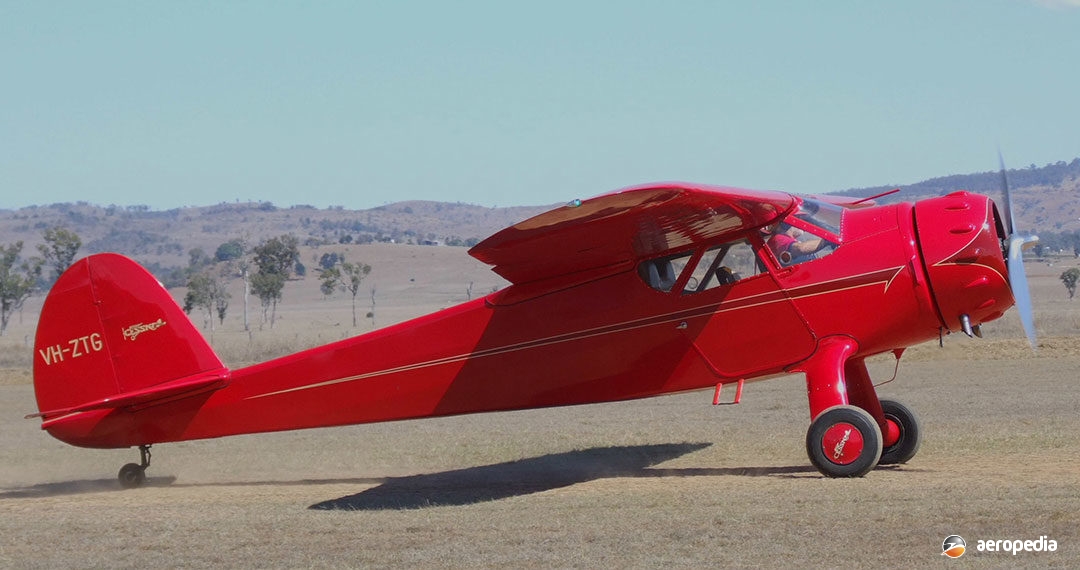Photograph:
Cessna C-165 Airmaster VH-ZTG (c/n 589) at Watts Bridge, QLD in August 2006 (David C Eyre)
Country of origin:
United States of America
Description:
Four-seat touring monoplane
Power Plant:
One 123 kw (165 hp) Warner Super Scarab Series 50 seven-cylinder air-cooled radial engine
Specifications:
- Wingspan: 10.42 m (34 ft 2 in)
- Length: 7.52 m (24 ft 7 in)
- Height: 2.13 m (6 ft 11 in)
- Wing area: 16.7 m² (179.76 sq ft)
- Max speed: 272 km/h (169 mph)
- Max cruising speed: 252 km/h (156 mph)
- Economical cruising speed: 194 km/h (121 mph)
- Stalling speed: 80 km/h (49 mph)
- Rate of climb: 282 m/min (925 ft/min)
- Service ceiling: 5,883 m (19,300 ft)
- Max range with no reserve: 845 km (525 miles)
- Max range with optional fuel tank: 1,167 km (725 miles)
- Empty weight: 790 kg (1,742 lb)
- Useful load: 277 kg (611 lb)
- Max baggage weight: 29 kg (64 lb)
- Loaded weight: 1,067 kg (2,352 lb)
History:
The Cessna C-165 was a development of the earlier Models C-37 and C-38 produced by the Cessna Aircraft Company at its Wichita, Kansas facility shortly before the commencement of World War I. It was the culmination of the development of the Warner Super Scarab powered series, and was a stylish, clean, cantilever-wing aircraft of good performance. It was the last design of the Company for private use pre-war before it turned its attention to aircraft for the military.
Known as the Cessna Airmaster, it was actually the first of the series to receive a name, although in more recent times earlier models have been incorrectly known by the name. The name Airmaster applied to aircraft constructed after October 1937, the model numbers changing at that time from two digits to three digits delineating the power of the engine installed.
The Airmaster had a cantilever all-wood construction wing with an NACA 2412 aerofoil and wooden tail surfaces, the latter not requiring struts. The cabin was 1.02 m (3 ft 4 in) wide and accommodation was provided for four, two in separate seats in the front, with a full-width rear bench. Behind the rear seats was a luggage area of 1.13 m³ (39.9 cub ft) able to carry 30 kg (66 lb). Fuel was carried in three tanks, two 72 litre (15.8 Imp gal) tanks in the wing roots, and an optional 65 litre (14.3 Imp gal) tank in the cabin roof behind the spar. Dual flying was via two control columns which actuated ball-bearing mounted elevators through push-pull rods and the ailerons via cables. Heel brakes were fitted to the pilots foot pedals, these operating the rudder via cables.
A Cessna C-165 Airmaster (c/n 589) was imported from the United States in the early 1990s and restored at Bankstown, NSW by Tony Green, becoming VH-ZTG (c/n 589 –ex N32487) on 24 November 1992, and has been airworthy in Queensland.

